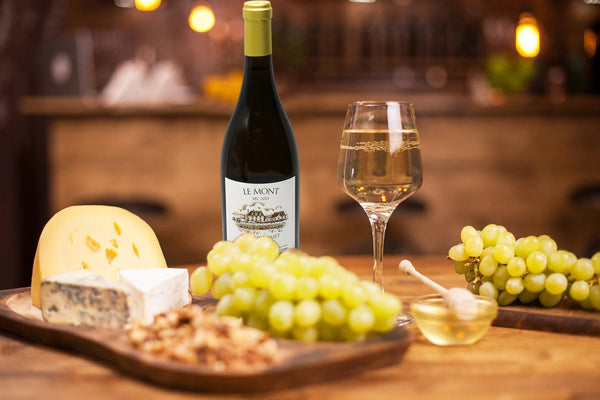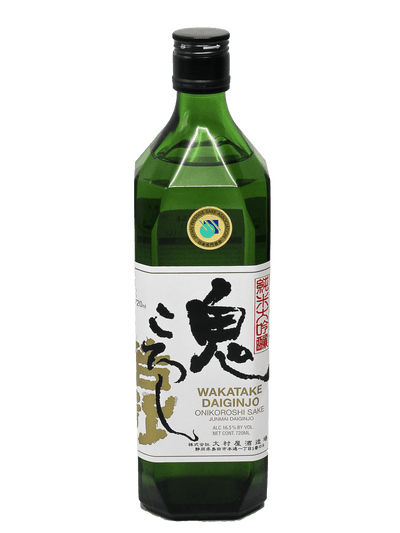Dry White Wine: An Introduction

What makes some wines, usually white wines, dry and others sweet, and how do we know if a white wine bottle contains wine that is sweet or dry?
The answer is a primary consideration for most wine consumers, but in most cases wine producers like to make us guess.
The relative dryness of a wine is measured in terms of residual sugar, or RS in the jargon of wine experts. This is the natural grape sugar level that remains after fermentation. Once the grapes are crushed, the yeast feeds on the sugar in the grape juice (or must) to produce alcohol and carbon dioxide. It's hard to predict exactly how yeast will behave and they rarely finish the job completely, mainly because some sugars ferment easily. Once a certain alcohol level is reached, the yeast die naturally or the winemaker stops fermentation.
Know the wine you are drinking
There is always some sugar left over, even in the case of "dry" wines, although the level is quite trivial. Technically, a wine is considered dry if it contains less than two grams of sugar per liter of liquid. But even here, the perceived dryness of the wine depends on a number of components, most notably acidity.
To produce slightly dry or sweet wines, winemakers will intentionally stop fermentation prematurely, usually by controlling the temperature. Cooling the fermentation vessel paralyzes the yeasts, preventing them from completing their job. Alternatively, many dessert wines are produced from desiccated grapes, essentially raisins, which contain a higher concentration of sugar than juice.
The yeasts will gorge until full and then die off as the alcohol rises, leaving plenty of extra sugar. Many dessert wines contain much more than 100 grams of sugar per liter. Sweet port is made in another way, stopping the fermentation halfway through the process with the addition of a high-alcohol brandy. That excess alcohol instantly kills the yeast, once again leaving behind a large amount of natural grape sugar.
In some cases, the sweetness will be added to the wine externally, sometimes in the form of natural unfermented grape juice. Many German sparkling and Riesling wines, which tend to have high acidity, will be balanced in this way so as not to taste too strong or unbalanced. But this can be considered an exception to the "residual sugar" rule.
How do we know if a wine is sweet or dry?
Before you buy white wine online, you may want to know how much sugar is in it, but that’s not so easy. Winemakers are cautious; they have a very precise task before them. They rarely advertise whether a wine is semi-dry, dry, or sweet, preferring to let consumers guess. This can be frustrating, because with some styles of wine, the spectrum can range from dry to quite sweet.
Vouvray, an appellation from the Loire Valley in France, is a classic example. It is rarely known in advance how sweet the wine will be because only some Vouvray producers list the terms "dry" or "sweet" on the label. Look up "sec" if you want to make sure it's dry ("moelleux" and "doux" denote sweet). We know that the 2021 Domaine Huet Vouvray Sec Le Mont from your wine store Santa Rosa is dry, for example.
German wine labels
German labels tend to be descriptive, but it helps to know a little German and something about the wine laws there. "Trocken" means dry, although "dry" wines often contain much more than two grams per liter of sugar. These wines taste essentially dry owing to the high acidity that is prevalent in German wines. To test this out, get a variety of German wines when you buy white wine online, then taste them side by side.
The popular label term “kabinett” is often confused to mean dry when, in fact, it refers to the relative sweetness of the grapes at harvest, not the wine itself. That being said, kabinett Rieslings are generally on the drier side (but there’s no guarantees). A great and laudable exception is Canadian and Finger Lakes Riesling. Producers will often helpfully label them "dry" to distinguish slightly sweet styles from dry Riesling.
The best rule of thumb to determine if a wine is sweet or not
The best rule of thumb (and it's still grossly inadequate) is to check the alcohol content. If the wine has 11 percent or less, it's likely to be at least a little sweet. Low alcohol content tends to mean that the yeast hasn't finished its job (turning sugar into alcohol). Generally, less alcohol equals more RS.
In the end, sugar is only a rough measure of whether the wine will taste sweet. It is a matter of balance. Some 14 percent alcohol wines can taste subtly sweet, not because they contain a lot of sugar, but because they are very fruity (a taste often mistaken for sweetness) or because they lack enough acidity to create a feeling of complete dryness. Australian Shiraz is a good example; it can taste vaguely sweet even when technically dry.
Recognize the type of wine you are tasting
Chablis, Sauvignon Blanc, and “dry” Riesling are considered examples of dry white wine, while Claret, Burgundy, and Chianti are considered the driest of the reds. On the other hand, Port, Cream Sherries, Moscato, and Tokay are considered the sweetest wines on the market. Well-known varieties such as Chardonnay can be sweet or dry, depending on the type of grape growing, any winemaking additions, and region.
Smell the wine
By putting nose over a glass of wine, we will capture the aromas of the wine. This will help us determine if the wine is sweet or dry. If we detect aromas of sugar, fruit, or white flowers, it is probably a sweet wine. However, if we perceive herbs, spices, oak, or baking aromas, we will have a drier wine in front of us. Be careful: some wines can contain misleading aromas, such as chocolate and citrus, that do not indicate whether the wine will be dry or sweet.
Tasting the wine
The best indicator of whether a wine is dry or sweet is your tongue. Drink wine, let it sit on your tongue, swirl it around in your mouth, then swallow and wait for an aftertaste. A dry wine tends to have a stronger taste on the tongue, but a clean finish. You will also taste the sweetness, though sometimes the fruity or honey-like flavors and aromas can deceive us.
To learn more about wines and winemaking, please visit our other wine articles online!


















Leave a comment